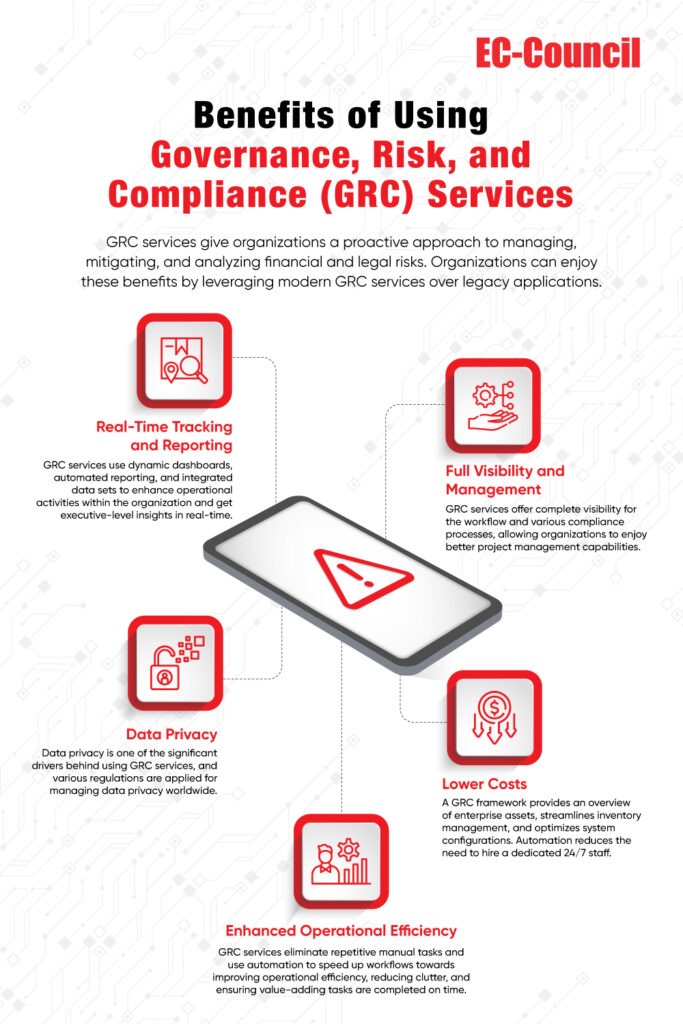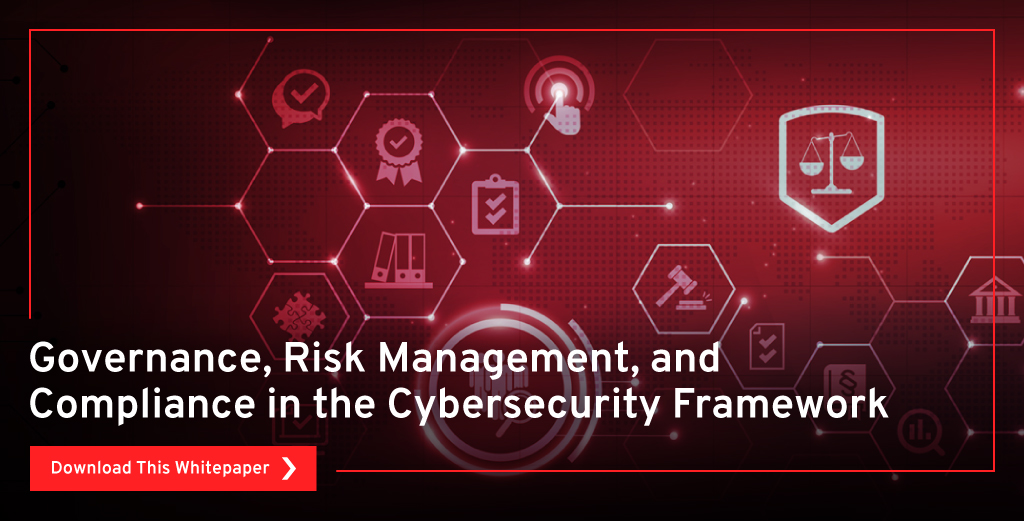Governance, Risk Management, and Compliance in the Cybersecurity Framework
Governance, Risk Management, and Compliance (GRC) in the cybersecurity framework plays a vital role in cybersecurity planning and helps organizations mitigate risk to prevent future data breaches. While there are many existing frameworks widely accepted by companies such as the NIST cybersecurity framework, HIPAA, GDPR, SOC2, and FISMA, the GRC approach to improving cybersecurity includes processes such as the planning and administration of technologies that support the critical protection of assets. GRC focuses on 5 key areas such as risk treatment, policy development, governance and compliance, strategic planning, and vulnerability assessments.
Every industry is unique and data compliance is handled differently, which means most businesses can end up using more than one framework to meet their business requirements. GRC helps stakeholders review security controls that are put in place, perform internal and external audits, and set standards for sharing data with third-party solutions providers.
Cyberattacks may take various forms and utilize various technologies to breach a network or compromise assets, but the majority of data breaches occur due to lost, stolen, or mismanagement of credentials. GRC follows a holistic approach to cybersecurity and entails the utilization of all components through infrastructures, unifying enterprise risk management, governance, and compliance with the latest regulations. It identifies potential gaps in security processes and is excellent in providing comprehensive analytics to make remediation recommendations and give a complete overview of the organization’s security posture.
While cyberattacks may utilize various means and technologies to breach a network or compromise assets, data breaches occur majorly due to lost, stolen, or mismanagement of credentials.
In this whitepaper, we will be discussing how to implement the GRC framework effectively into your organization and establish security management structures. The cost of non-compliance is steep, and companies can save billions of dollars by ensuring a strong foundation. Companies often lack the capacity to assess their data security, and employees may become overly confident about their cyber preparedness due to the availability of security technologies. However, it is important to note that a significant part of compliance deals with ensuring that systems are properly configured and aligned with the latest regulatory requirements.

We will also cover the top compliance challenges when implementing the GRC framework, its benefits and limitations, and other relevant details to help you stay ahead of the curve. By the end of this whitepaper, you will have a strong understanding of GRC, its enablement procedures, how to develop GRC processes for your organization, and how to best integrate it with various Information Technology (IT) and Operation Technology (OT) frameworks. Read the entire whitepaper here.









